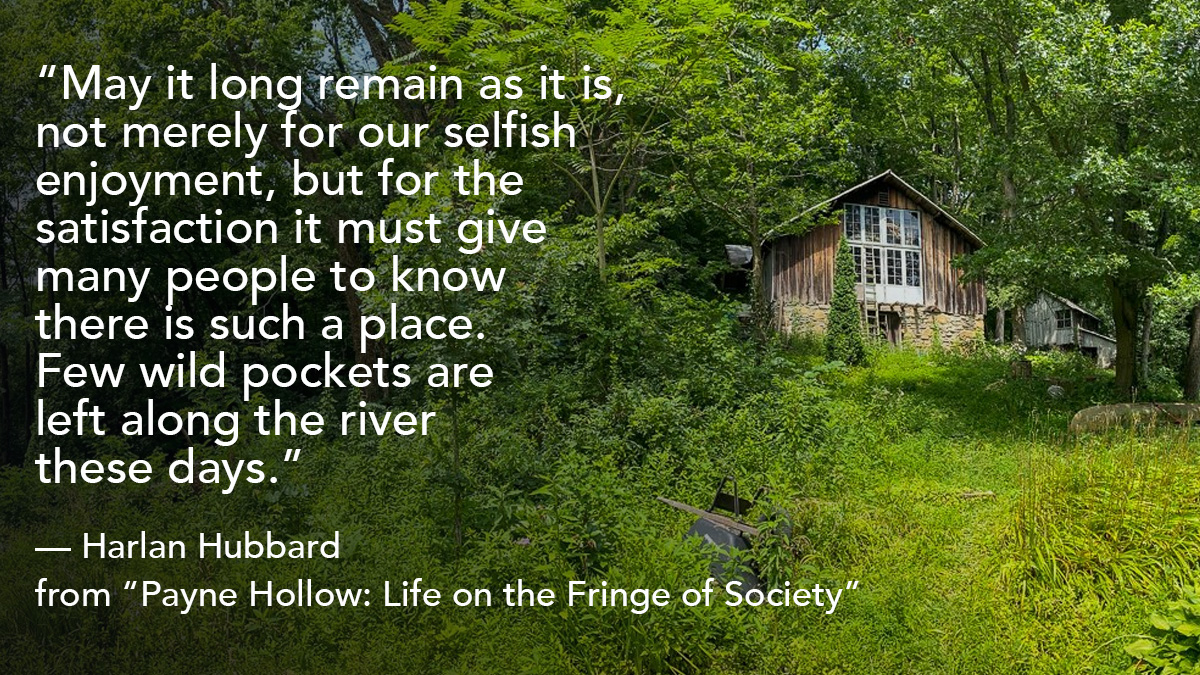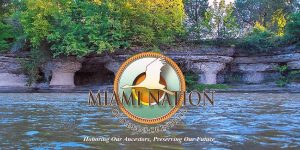Preserving a legacy of intentionality

Harlan Hubbard’s property secured by not-for-profit group
A legacy can often point to business success or a singular contribution. Seldom do legacies bring together such unique aspects as that of Harlan Hubbard. Art and architecture, carpentry and community, ecology and education, history and preservation all fuse to reflect the life and influence of the celebrated artist and writer.

While his paintings gained attention, it was his effect on people that ventured well beyond his rustic borders. He was revered in the Ohio River valley not only for his artwork, but also his intelligence, gentility, philosophy, resourcefulness and practice of sustainable living.
The Hubbards built a shantyboat in 1944, traveling between Kentucky and the Louisiana Bayou until 1951, when they settled at Payne Hollow, their property located in nearby Trimble County, Ky. The couple led a modest existence on the banks of the Ohio River for more than 30 years, rejecting the use of modern conveniences and living off the land with no electricity or running water in their shantyboat and rustic cabin. Anna Hubbard died in 1986. Harlan followed two years later after a five-year battle with cancer.
Nearly 35 years after his death, the diligent work of a diverse collection of experts has secured Hubbard’s legacy.
The couple’s 61-acre riverside plot, along with all of its buildings and their contents, is now owned by Payne Hollow on the Ohio, a not-for-profit group (501 C-3) formed this past summer. The organization is committed to preservation of the property and promotion of the Hubbard legacy. Three Hanoverians are key elements within the group’s executive core.
Jessica Whitehead ’11 serves as the board of director’s secretary. She works as curator of collections at the Kentucky Derby Museum and has done extensive thesis work on Hubbard. John Fettig ’67, a historical advisor, is a retired fundraising professional with vast experience in the not-for-profit sector. Jen Duplaga, an experienced preservationist, serves as an advisor to the group. She has worked as Hanover’s archivist and special collections administrator since 2015.
“Payne Hollow is a work-in-progress and we are thankful to have a magnificent team of experts in ecology, history, preservation, carpentry, architecture, art and education working with us to make the property live up to its legacy and full potential,” stated Whitehead. “I think it is the common goal of all of us at Payne Hollow to educate and inspire the community through the instructive example of Harlan and Anna Hubbard’s life at Payne Hollow, to understand how culture and ecology can find a place in their lives.”
Payne Hollow on the Ohio is developing a three-year strategic plan. Initial goals include securing the property and buildings to safeguard historically significant artifacts, stabilize architecturally significant structures and conduct a comprehensive flora and fauna study to identify sensitive ecological areas. The group also aims to acquire additional land and boat-launching site for permanent access, designate the property as the first permanently protected land on the Kentucky shore between Cincinnati and Louisville, and document the site for potential inclusion on the National Register of Historic Places.
During their years at Payne Hollow, the Hubbards developed a lengthy, close relationship with Hanover College.

“Harlan and Anna Hubbard, while not alumni, were active and influential members of the Hanover College community,” noted Duplaga. “They served as mentors to students, allowed classes to visit Payne Hollow to discuss the environment and sustainable living, and were commonly seen on campus at concerts, art shows and borrowing large stacks of books from the library.”
The connection between Hanover and the Hubbards was also reinforced through the artwork. Hubbard, who had formally studied art in Cincinnati and New York, spent most of his life working in various mediums, including paintings, watercolors and woodcuts. He is credited with creating more than 1,000 pieces, characterized by rustic images and handmade frames often constructed from driftwood and other materials found on the riverbank.
The couple donated 31 paintings to Hanover through the years. The resulting collection, featuring depictions of rural life and the Ohio River valley, was curated by Hannah Miller ’20 and debuted as an exhibition in 2019. “Harlan Hubbard, Life as Art” remains on permanent display on the library’s first floor.
“As an archivist, my job is not only to collect documents and artifacts, but to share the stories those objects tell,” stated Duplaga. “The exciting part of serving on the Payne Hollow on the Ohio Advisory Committee is maintaining that connection between Hanover College, Payne Hollow and the Hubbards and sharing that story with past, current and future Hanoverians.”
While the property is currently closed to the public, the organization is developing an action plan for future stewardship. This effort eyes fostering and furnishing educational materials and opportunities inspired by the Hubbards and the land, organizing guided public visits and programming, and working with partners to ensure long-term appreciation of Payne Hollow and Hubbard’s’ legacy.
“We all feel so privileged to be the next stewards of this vital Kentucky heritage site,” added Whitehead. “Harlan and Anna Hubbard created a blueprint for sensitive, intentional, creative living, from which we can all take inspiration. Payne Hollow is a physical reminder to live beautifully, in concert with the natural world around us, an ethos that is only becoming more relevant in the era of climate change.”
Photos courtesy of Payne Hollow on the Ohio: paynehollowontheohio.org



